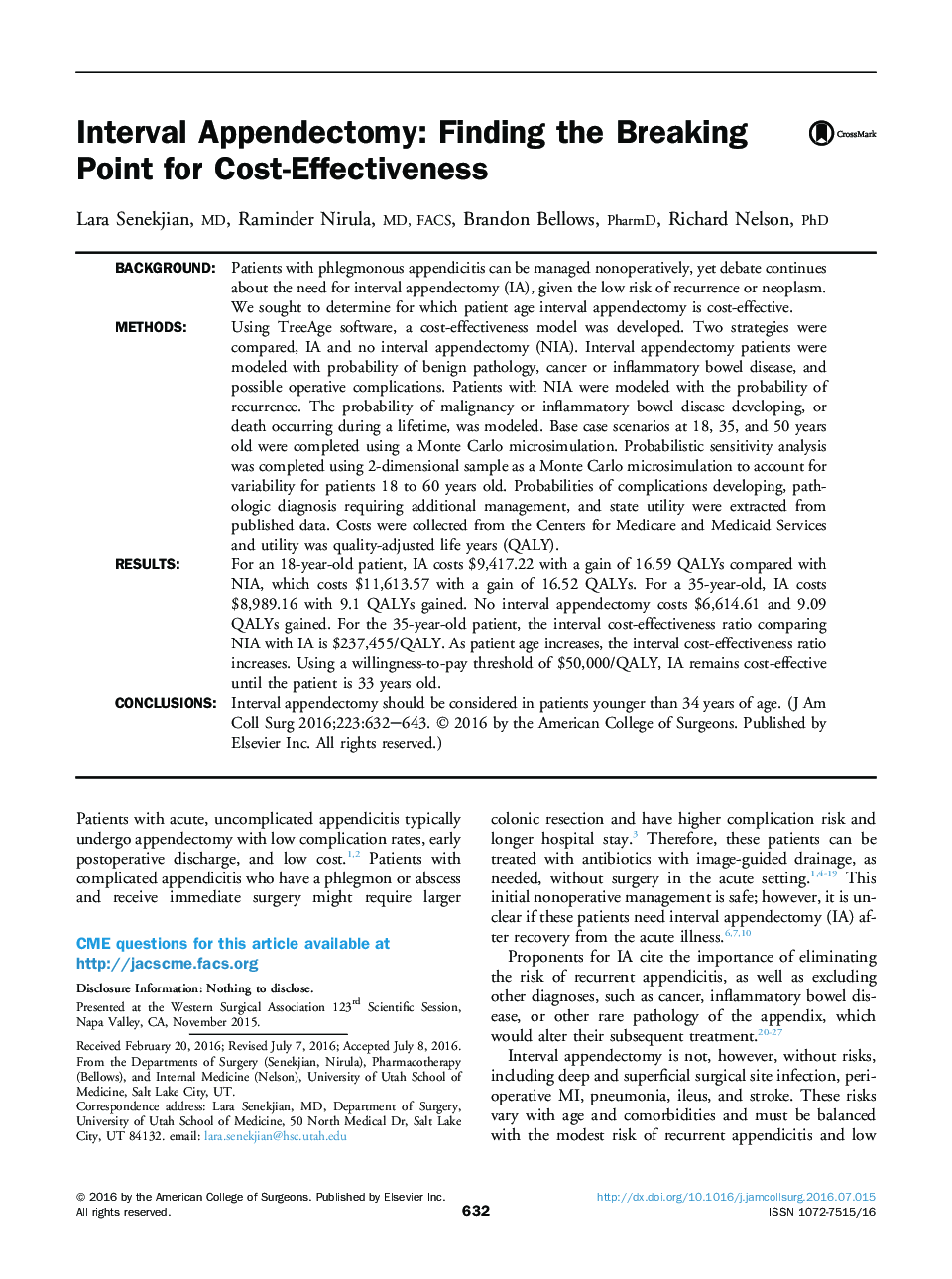| Article ID | Journal | Published Year | Pages | File Type |
|---|---|---|---|---|
| 4290465 | Journal of the American College of Surgeons | 2016 | 12 Pages |
BackgroundPatients with phlegmonous appendicitis can be managed nonoperatively, yet debate continues about the need for interval appendectomy (IA), given the low risk of recurrence or neoplasm. We sought to determine for which patient age interval appendectomy is cost-effective.MethodsUsing TreeAge software, a cost-effectiveness model was developed. Two strategies were compared, IA and no interval appendectomy (NIA). Interval appendectomy patients were modeled with probability of benign pathology, cancer or inflammatory bowel disease, and possible operative complications. Patients with NIA were modeled with the probability of recurrence. The probability of malignancy or inflammatory bowel disease developing, or death occurring during a lifetime, was modeled. Base case scenarios at 18, 35, and 50 years old were completed using a Monte Carlo microsimulation. Probabilistic sensitivity analysis was completed using 2-dimensional sample as a Monte Carlo microsimulation to account for variability for patients 18 to 60 years old. Probabilities of complications developing, pathologic diagnosis requiring additional management, and state utility were extracted from published data. Costs were collected from the Centers for Medicare and Medicaid Services and utility was quality-adjusted life years (QALY).ResultsFor an 18-year-old patient, IA costs $9,417.22 with a gain of 16.59 QALYs compared with NIA, which costs $11,613.57 with a gain of 16.52 QALYs. For a 35-year-old, IA costs $8,989.16 with 9.1 QALYs gained. No interval appendectomy costs $6,614.61 and 9.09 QALYs gained. For the 35-year-old patient, the interval cost-effectiveness ratio comparing NIA with IA is $237,455/QALY. As patient age increases, the interval cost-effectiveness ratio increases. Using a willingness-to-pay threshold of $50,000/QALY, IA remains cost-effective until the patient is 33 years old.ConclusionsInterval appendectomy should be considered in patients younger than 34 years of age.
